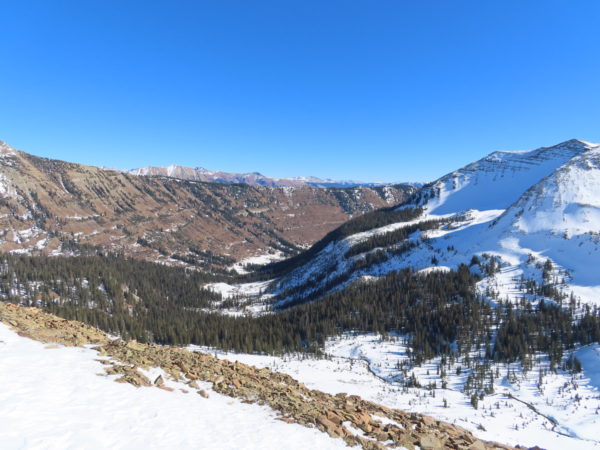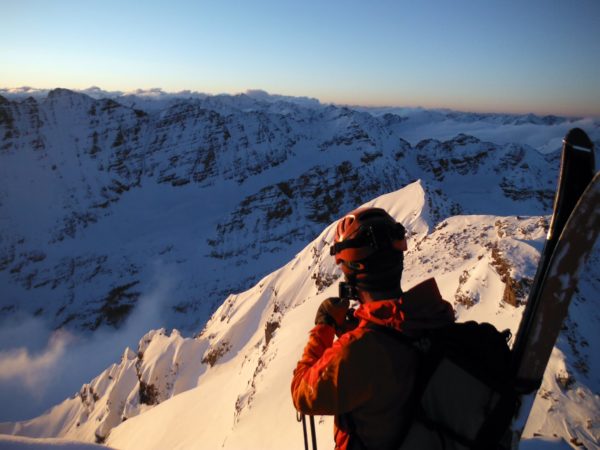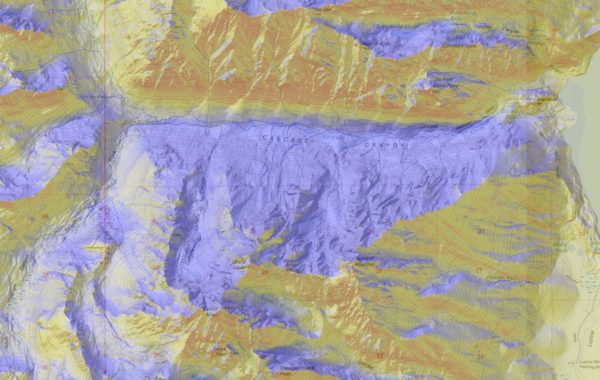The amount of sun or shade on a slope.
The amount of solar radiation on terrain has important implications for snowpack evolution and avalanche activity. In the northern hemisphere, steep slopes that face due south receive the most solar influx, while due north aspects receive the least. When forecasters in the northern hemisphere describe “shadier aspects”, they are generally referring to the northern half of the compass, while “sunny aspects” are on southerly facing terrain. Sun exposure is also influenced by slope angle (steeper slopes facing the sun catch more direct solar radiation) and terrain shading from nearby mountains or trees. Sun exposure increases later in the spring as the sun angle rises higher in the sky; this effect is more pronounced at higher latitudes. Sun exposure plays a critical role in the energy balance at the snow surface, which contributes to weak layer formation and destruction, melting, wet avalanches, and more. Paying attention to the sun exposure of a slope, even when the sun is obscured by clouds, is an important tool for managing avalanche hazards.

Although sun exposure is easily illustrated with early season photos like this, it plays an important role in weak layer formation and destruction throughout the entire winter. Credit: Crested Butte Avalanche Center


